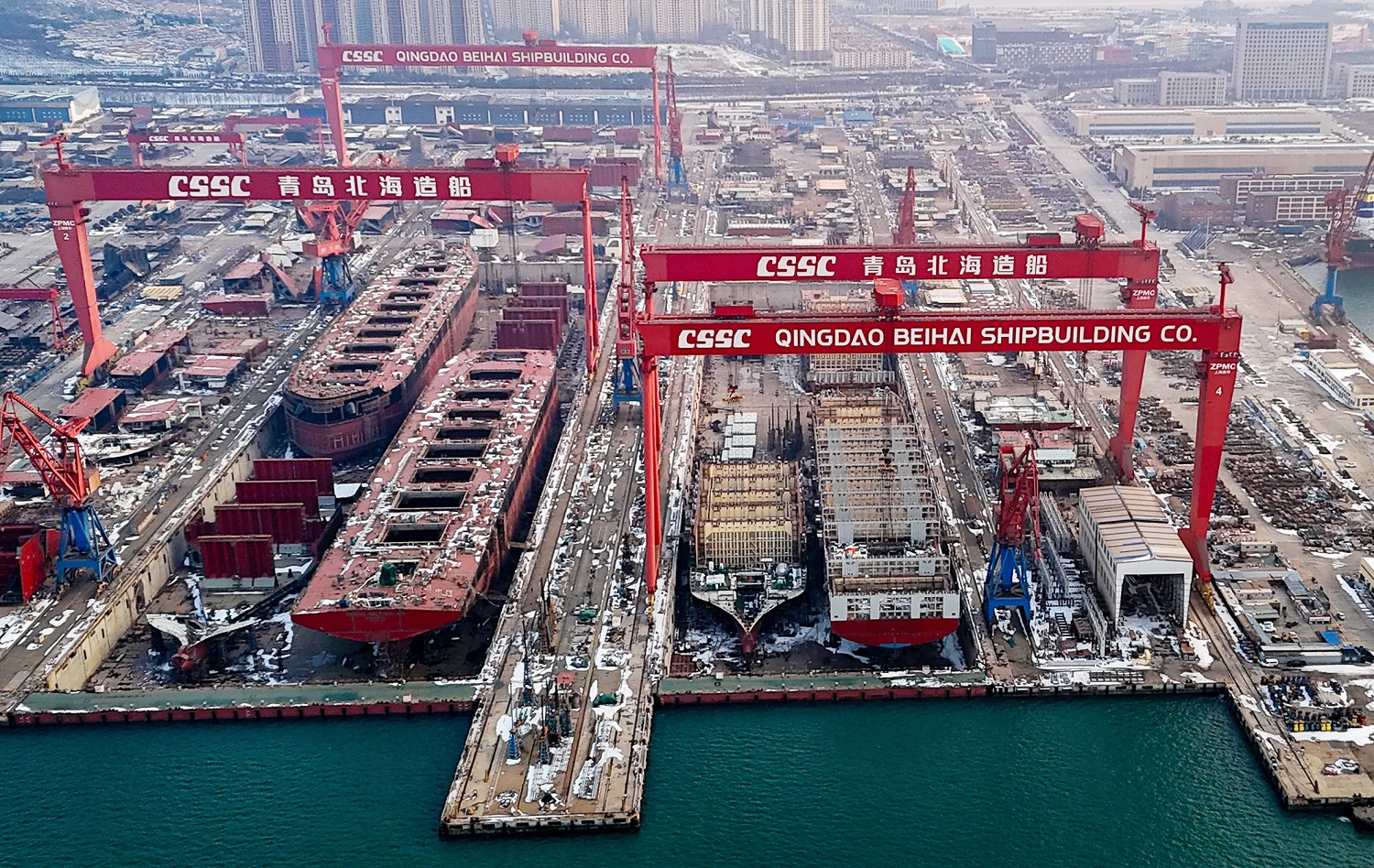Archives
Business, Feature, Freight News, Sea
Trump Seeks China Ship Fees to Benefit US Flag
[ February 28, 2025 // Gary G Burrows ]The Trump administration has proposed fees on the use of China’s commercial ships to combat the Asian giant’s maritime dominance, Bloomberg reported Feb. 21
The Office of the U.S. Trade Representative outlined a plan for fees on Chinese-built ships that transport traded goods, as well as cabotage mandates requiring a portion of U.S. products to be moved on U.S. vessels.
The proposal, announced Feb. 21, is based on a trade investigation into China’s practices in the maritime, logistics and shipbuilding industries that began under the Biden administration and concluded with a report Jan. 16, just four days before President Donald Trump took office. The U.S. inquiry concluded that Beijing was unfairly dominating the sectors and said “urgent action” was needed to address the issue.
If adopted, however, the proposed fees could create additional costs for U.S. consumers, since higher shipping costs could be passed on in the form of higher prices. It’s also not clear that the proposals would be enough to restore U.S. shipbuilding capacity, which has eroded despite century-old cabotage protections under the U.S. Jones Act, which requires U.S.-built, -registered and -crewed ships to move goods between U.S. ports. The act is meant to encourage construction and use of U.S. ships, Bloomberg reported.
While the U.S. churns out its own steady supply of warships and Europe leads the world in building cruise ships, global merchant shipbuilding is dominated by three Asian countries: China, South Korea and Japan, which together account for well more than 90 percent of commercial shipbuilding.
China has targeted the maritime, shipbuilding and logistics sectors for dominance, effectively undercutting competition and winning “market share with dramatic effect,” the USTR office said in its proposal.
China’s market share has grown from less than 5 percent of global tonnage in 1999 to more than half in 2023. China owned 19 percent of the commercial world fleet as of January 2024, and it produces 95 percent of shipping containers, the USTR said.
Higher costs for shipping on Chinese vessels would benefit shipbuilders in South Korea and Japan before U.S. shipbuilding got even a whiff.
The U.S. ranks 19th in the world in commercial shipbuilding, building less than five ships a year, Katherine Tai, former USTR under President Joe Biden, said last month. China, in comparison, builds more than 1,700 per year.
China’s dominance in the industry is partly due to low pricing and labor standards as well as artificially low labor costs that undercut competition, the Biden administration said.
Overreliance on Chinese supplies create economic security risks tied to potential disruption, the trade office said.
The proposed remedies, which would be imposed under Section 301 of the 1974 Trade Act, are now subject to public comment and review, including during a public hearing scheduled for next month.
The USTR proposes several service fees, including charging Chinese-built vessels as much as US$1 million when entering a U.S. port.
The Trump administration would also ratchet up restrictions on maritime transport of all U.S. goods. Initially requiring at least 1 percent of U.S. products exported by maritime vessels would have to be carried on vessels that are both U.S.-flagged and -operated. The requirements would steadily rise, with the threshold climbing to 15 percent after seven years and eventually encompassing requirements the ships be built in the U.S., too, Bloomberg said.
The USTR seeking to meet a statutory deadline to announce remedies in the probe as Trump’s USTR nominee Jamieson Greer, has only just been confirmed.
Trump started his second term fomenting talk of trade wars, beginning with Canada and Mexico. Though he held off on duties for those North American partners, Trump said the tariffs “are going on time, on schedule.” He has already implemented a 10 percent tariff on all Chinese goods, but said he would double the tariffs to 20 percent on March 4. Trump claims the tariffs are retribution for China’s failure to stop the fentanyl trade.
Trump has also threatened tariffs on a range of sectors, including automobiles, semiconductors, pharmaceuticals and lumber by early April.
The commercial shipping sector is viewed as a major leverage point China could exploit given the global trading system’s dependence on its vessels. Any disruptions to that system, accidental or not, could lead to supply chain shocks that the U.S. wants to avert.
The move is supported by unions and has been a focus for lawmakers.

Tags: Office of the U.S. Trade Representative







